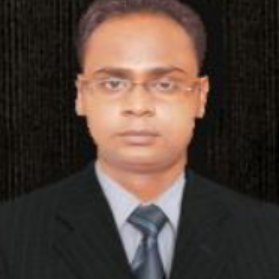International Journal of Image, Graphics and Signal Processing (IJIGSP)
IJIGSP Vol. 8, No. 1, 8 Jan. 2016
Cover page and Table of Contents: PDF (size: 907KB)
A New Locally Adaptive Patch Variation Based CT Image Denoising
Full Text (PDF, 907KB), PP.43-50
Views: 0 Downloads: 0
Author(s)
Index Terms
Image denoising, Threshoding, Method noise, Correlation analysis, Aggregation
Abstract
The main aim of image denoising is to improve the visual quality in terms of edges and textures of images. In Computed Tomography (CT), images are generated with a combination of hardware, software and radiation dose. Generally, CT images are noisy due to hardware/software fault or mathematical computation error or low radiation dose. The analysis and extraction of medical relevant information from noisy CT images are challenging tasks for diagnosing problems. This paper presents a novel edge preserving image denoising technique based on wavelet transform.
The proposed scheme is divided into two phases. In first phase, input CT image is separately denoised using different patch size where denoising is performed based on thresholding and its method noise thresholding. The outcome of first phase provides more than one denoised images. In second phase, block wise variation based aggregation is performed in wavelet domain.
The final outcomes of proposed scheme are excellent in terms of noise suppression and structure preservation. The proposed scheme is compared with existing methods and it is observed that performance of proposed method is superior to existing methods in terms of visual quality, PSNR and Image Quality Index (IQI).
Cite This Paper
Manoj Kumar, Manoj Diwakar,"A New Locally Adaptive Patch Variation Based CT Image Denoising", International Journal of Image, Graphics and Signal Processing(IJIGSP), Vol.8, No.1, pp.43-50, 2016. DOI: 10.5815/ijigsp.2016.01.05
Reference
[1]A. Manduca, L. Yu, J. D. Trzasko, N. Khaylova, J. M. Kofler, C. M. McCollough and J. G. Fletcher, "Projection space denoising with bilateral filtering and CT noise modeling for dose reduction in CT," International Journal of Medical Physics Research and Practice, Vol. 36, No. 11, pp.4911-4919, 2009.
[2]D. Kim, S. Ramani and J. A. Fessler," Accelerating X-ray CT ordered subsets image reconstruction with Nesterov's first-order methods" In Proc. Intl. Mtg. on Fully 3D Image Recon. in Rad. and Nuc. Med pp. 22-5, 2013.
[3]F. Durand and J. Dorsey, "Fast bilateral filtering for the display of high dynamic range images," ACM Transactions on Graphics, Vol. 21, No. 3, pp.257–266, 2002.
[4]T. Goldstein and S. Osher, "The Split Bregman Method for L1 Regularized Problems," SIAM Journal on Imaging Sciences, Vol. 2, No. 2, pp.323-34, 2009.
[5]A. Chambolle, "An algorithm for total variation minimization and applications," Journal of Matter Image and Visualization', Journal Roy Statistic Society, Vol. 20, No. 1, pp.89–97, 2004.
[6]A. Buades, B. Coll and J. M. Morel Song, "A review of image denoising algorithms, with a new one," SIAM Journal on Multiscale Modeling and Simulation, Vol. 4, No. 2, pp.490–530, 2005.
[7]Z. Li, L.Yu, J. D. Trzasko, D. S. Lake, D. J. Blezek, J. G. Fletcher, C. H. McCollough and A. Manduca, "Adaptive nonlocal means filtering based on local noise level for CT denoising," International Journal of Medical Physics Research and Practice, Vol. 41, No. 1, 2014.
[8]M. Aharon, M. Elad and A. Bruckstein, "K-SVD: An algorithm for designing overcomplete dictionaries for sparse representation', IEEE Trans. Signal Process, Vol. 54, pp.4311–4322, 2006.
[9]S. Mallat, "A theory for multiresolution signal decomposition: the wavelet representation," IEEE Trans. on Pattern Anal. Mach. Intell. , Vol. 11, No. 7, pp.674–693, 1989.
[10]K. Li and R. Zhang, "Multiscale wiener filtering method for low-dose CT images," IEEE Biomedical Engineering and Informatics, pp.428–431, 2010.
[11]A. Fathi and A. R. Naghsh-Nilchi, "Efficient image denoising method based on a new adaptive wavelet packet thresholding function," IEEE Trans Image Process, Vol. 21, No. 9, pp.3981–3990, 1989.
[12]M. Malfait and D. Roose, "Wavelet based image denoising using a Markov Random Field a priori model," IEEE Transactions on Image Processing, Vol. 6, No. 4, pp.549–565, 1997.
[13]D. L. Donoho and I. M. Johnstone, "Ideal spatial adaptation via wavelet shrinkage," Biometrika, Vol. 81, pp.425–455, 1994.
[14]A. Borsdorf, R. Raupach, T. Flohr and J. Hornegger Tanaka, "Wavelet Based Noise Reduction in CT-Images Using Correlation Analysis," IEEE Transactions on Medical Imaging, Vol. 27, No. 12, pp.1685–1703, 2008.
[15]M. C. Motwani, M. C. Gadiya, R. C. Motwani and F. C. Harris, "Survey of Image Denoising Techniques," Proceedings of Global Signal Processing Expo and Conference (GSPx '04), pp.27–30, 2004.
[16]D. L. Donoho, "De-noising by soft-thresholding," IEEE Transactions on Information Theory, Vol. 41, No. 3, pp.613–627., Signal Process. Vol. 90 no. 8 pp 2529-2539, 2010, 1995.
[17]P. Moulin and J. Liu "Analysis of multiresolution image denoising schemes using generalized Gaussian and complexity priors," IEEE Infor. Theory, Vol. 45, No. 3, pp.909–919, 1999.
[18]F. Abramovitch, T. Sapatinas, and B. W. Silverman "Wavelet thresholding via a Bayesian approach," Journal Roy Statistic Society, Vol. 60, No. 4, pp.725– 749, 1998.
[19]J. Romberg, H. Choi and R. G. Baraniuk, "Bayesian wavelet domain image modeling using hidden Markov models," IEEE Transactions on Image Processing, Vol. 10, pp.1056–1068, 2001.
[20]S. G. Chang, B. Yu and M. Vetterli, "Adaptive wavelet thresholding for image denoising and compression," IEEE Trans. on Image Proc, Vol. 9, No. 9, pp.1532–1546, 2000.
[21]L. Xinhao, M. Tanaka and M. Okutomi, "Single- Image Noise Level Estimation for Blind Denoising," IEEE Transactions on Image Processing , Vol. 22, No. 12, pp.5226–5237, 2013.
[22]H. S. Bhadauria and M. L. Dewal, "Efficient Denoising Technique for CT images to Enhance Brain Hemorrhage Segmentation," International Journal of Digit Imaging, Vol.25, No. 6, pp. 782–791, 2012.
[23]P. Jain and V. Tyagi, "LAPB: Locally adaptive patch-based wavelet domain edge-preserving image denoising," Journal of Information Sciences, Vol. 294, pp. 164–181, 2015.

